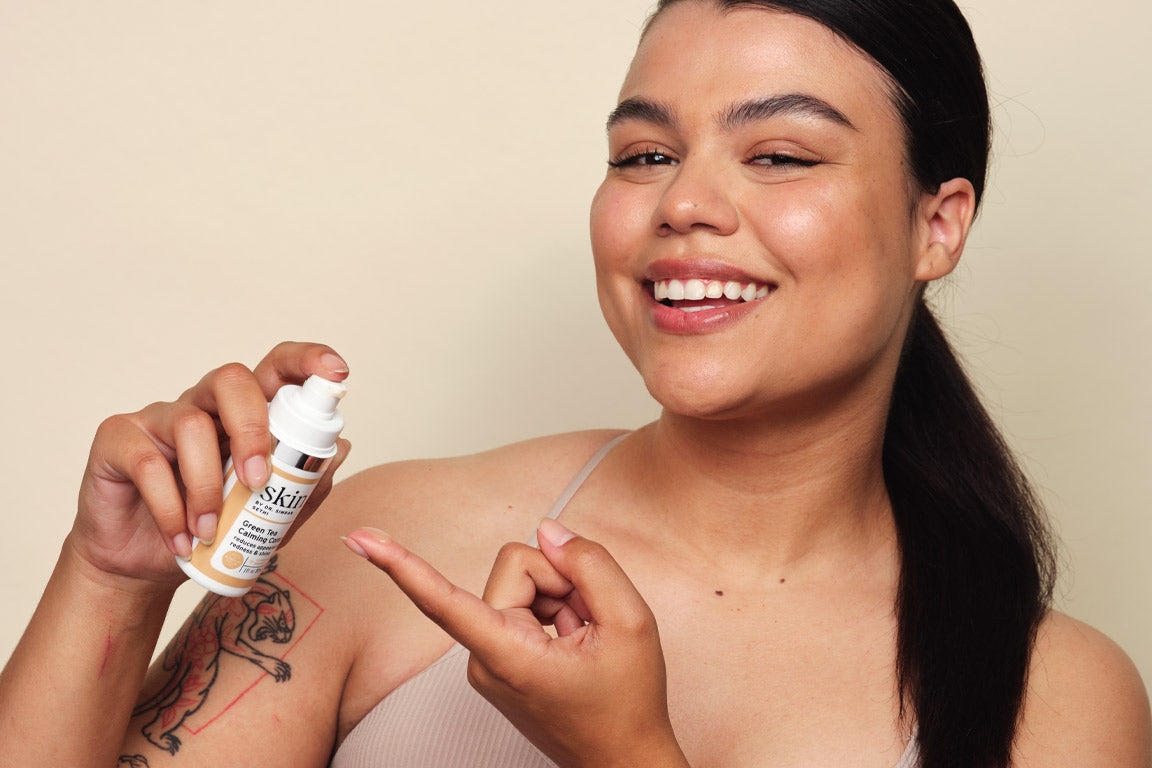The global beauty industry is a flourishing market with no lack of funding, generating billions of dollars each year. Buyers of all ethnicities and backgrounds seek out products to treat their skin concerns. And yet, despite the industry’s wealth and consumer demand, beauty brands have not always created products for people of color. So why do these individuals experience exclusion from this industry?
Many significant aspects play into the beauty and skincare industry’s exclusion toward the needs of non-white individuals. On episode 18 of The Skin Report podcast, Dr. Simran Sethi, an Internal Medicine doctor and the Founder and Medical Director of RenewMD, discusses the history and factors that have contributed to the industry’s harmful practices regarding people of color.
A History of Exclusion
Try as they might, it is difficult for people of color to find skincare products formulated to their skin needs. The beauty industry’s lack of inclusivity sends a harmful message to customers in linking their value to their skin tone and ethnicity. For this active exclusion, we can look to the strong presence of racism, colorism, and euro-centric beauty standards in the industry that has taken place throughout history.
The beauty industry is one of many industries in the United States with racist roots, which permeate every market area, including skincare. To this day, the skincare sector still has a strong presence of racism and colorism that have continued to influence their practices, such as the inability to meet consumer demands, the absence of diverse representation in beauty brands, and a lack of knowledge on how skin care elements affect melanated skin tones.
On the podcast, Dr. Sethi provides an in-depth analysis of the factors that have fed into this persistent problem within the industry. The following are several noteworthy contributors to the industry’s shortcomings regarding inclusivity.
Consumer Demand
First, let’s discuss consumer demand, and whether it plays a role in the beauty industry’s practices. Customer demand shapes the output of practically every industry, as vendors aim to provide customers with the products they desire. By this logic, one might assume that skincare companies’ lack of products for melanated skin is due to a lack of demand. However, this is far from the truth.
Nonwhite customers still have significant buying power in the beauty industry. The research discussed in episode 18 of The Skin Report shows that Asian Americans and Black women make up a large amount of buyer power and in fact, average a more impactful buying power than their white counterparts.
The demand for skincare products for people of color is not the issue. Rather, these products do not exist.
Eurocentric Beauty Standards
If the industry serves so many consumers of different races and cultural backgrounds, why is it that brands haven’t leaned into the demand for more diversity in their skincare lines? Well, this disconnect between brands and consumers may be attributed to the lack of diversity within the industry.
While women purchase the majority of skincare and beauty products, over 2/3rds of executives in the beauty industry are men. Furthermore, very few beauty brands in the United States are black-founded and black-owned, despite the demand of women of color consumers.
Another contributing factor is the persistence of Eurocentric beauty standards, which have dominated marketing efforts within the industry throughout history. For example, the Western European beauty standard of light skin has led to the creation of harmful skin lightening creams, bleaching and more. Unfortunately, bleach and similar dangerous practices work against melanin production in darker skin tones.
So why aren’t products available for people of color who want to work with their melanin and nourish their skin’s natural shades?
Product Research
People of color need skin care that is formulated with melanin in mind. Unfortunately, most skin care products are geared towards lighter skin tones, which not only proves ineffective, but can also cause more issues in darker skin tones.
The only way to formulate products for the safety and needs of dark skin tones is by first researching skin conditions and product effects on melanin as an important factor. Yet, there has been a significant lack of product research for this purpose. Without proper research and education, it’s impossible to understand how certain ingredients will react when applied to melanated skin.
The exclusion of people of color in skin care research has had a lasting negative effect on the beauty industry, as brands are unable to create products suited for people of color, and these consumers receive fewer options for their skin.
Every skin type has unique needs and conditions, and melanated skin is no different. Therefore, the lack of research on skin products for people of color is one of the most significant factors contributing to the lack of diversity within the skincare industry today. If you want to hear more about this issue and how it can be resolved to improve the inclusion of people of color, tune in to episode 18 of The Skin Report podcast to learn more.



